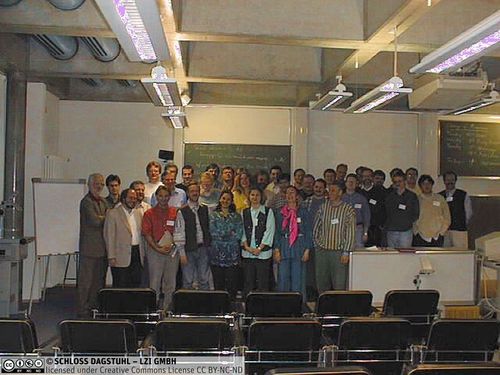Dagstuhl Seminar 98281
Semi-Formal and Formal Specification Techniques for Software Systems
( Jul 12 – Jul 17, 1998 )
Permalink
Organizers
- F. Orejas (Barcelona)
- G. Engels (Paderborn)
- H. Ehrig (TU-Berlin)
- M. Wirsing (Uni-München)
Contact
During the last 20 years several different formal and semi-formal specification techniques have been successfully developed and used. Applications comprise the specification of simple programs, data types and processes as well as complex hardware and software systems. The variety of specification techniques ranges from formal set theoretical, algebraic, and logic approaches for specifying sequential systems and from Petri-nets, process algebras, automata, and graph grammars for specifying concurrent and distributed behaviors to semi-formal software engineering methods for developing complex systems.
Formal and semi-formal approaches have their advantages and disadvantages: the informal diagrammatic methods are easier to understand and to apply but they can be ambiguous. Due to the different nature of the employed diagrams and descriptions it is often difficult to get a comprehensive view of all functional and dynamic properties. On the other hand, the formal approaches are more difficult to learn and require mathematical training. But they provide mathematical rigor for analysis and prototyping of designs. Verification is possible only with formal techniques.
Since a few years many researchers and research groups are putting more and more effort in closing this gap by integrating semi-formal and formal specification techniques. Their studies and experiences show the added value of combining semi-formal and formal techniques and at the same time open a whole range of new problems and questions which cannot be asked when studying formalisms in isolation.
In this seminar more than 40 scientists came together in 28 talks and two panel discussions to study possibilities and solutions for integrating and validating different formal and semi-formal specification techniques. Similarities and differences of formal and semi-formal specification formalisms as well as possibilities for combining such techniques were discussed. Most talks of this seminar analysed, compared, or integrated at least two such methods.
On behalf of all participants the organizers would like to thank the staff of Schloss Dagstuhl for providing an excellent environment to the conference. The support of the TMR programme of the European Community is gratefully acknowledged. Due to this programme it was possible to fund the participation of several young researchers and of three key note speakers.
- F. Orejas (Barcelona)
- G. Engels (Paderborn)
- H. Ehrig (TU-Berlin)
- M. Wirsing (Uni-München)


